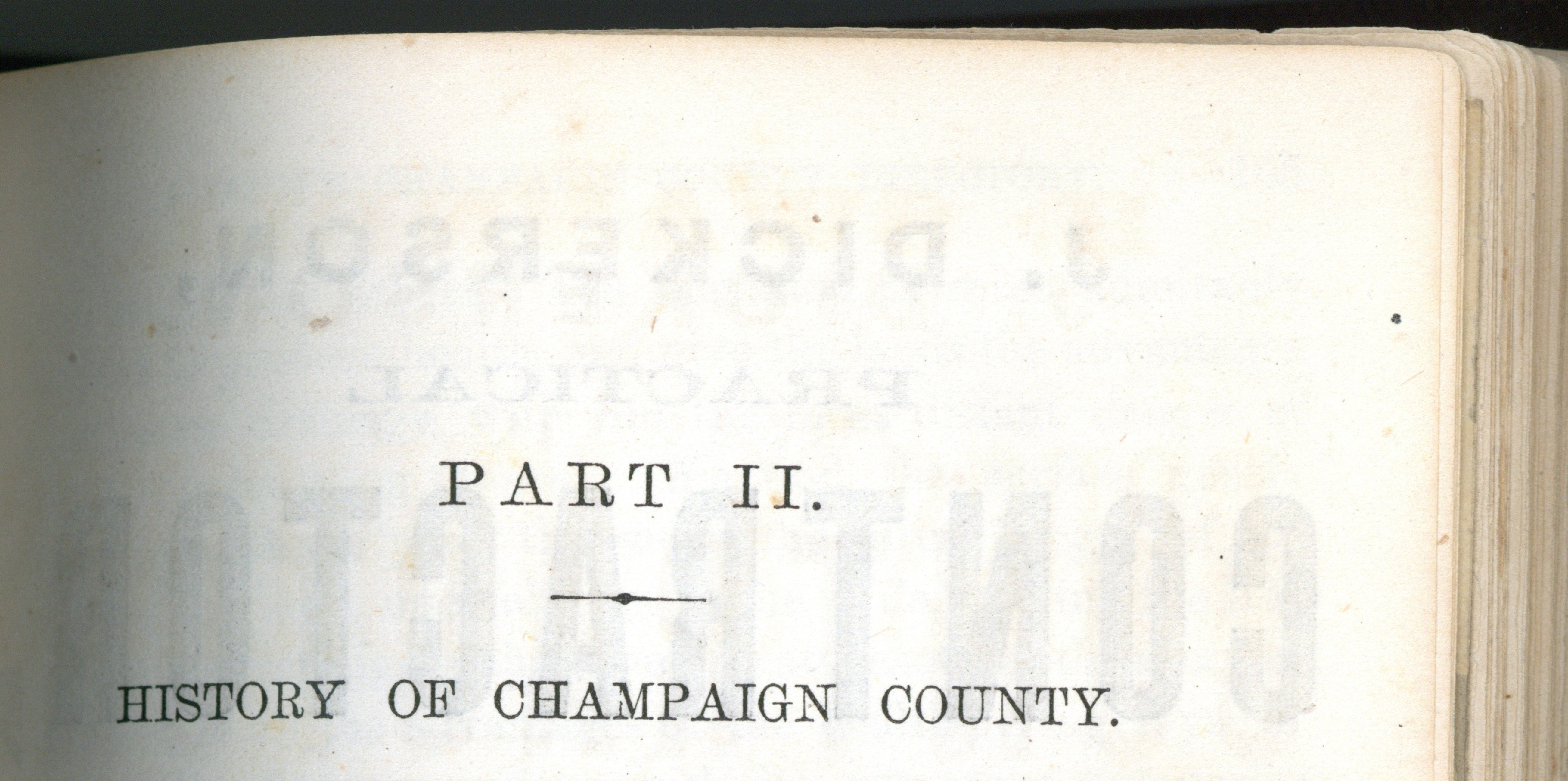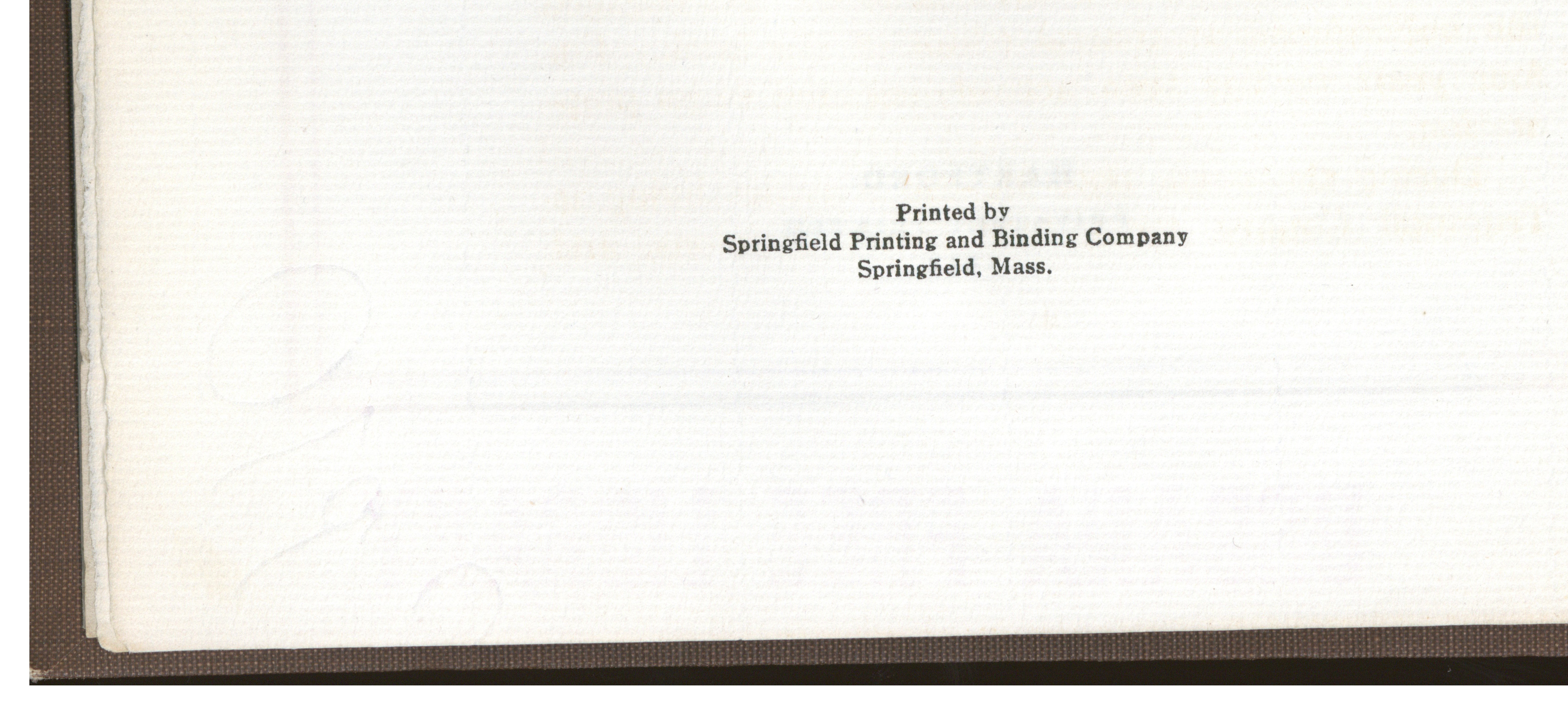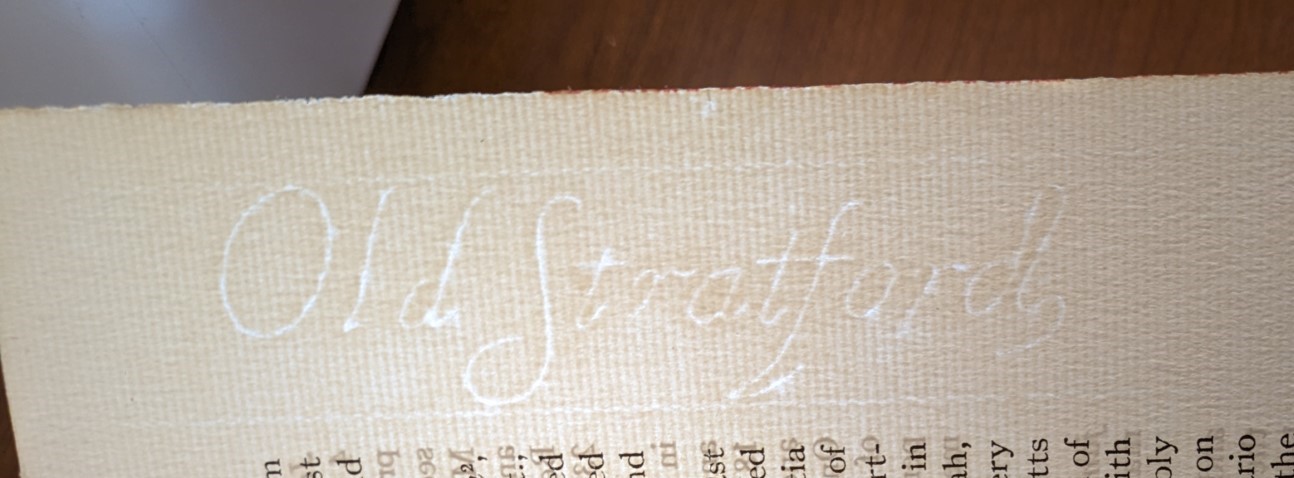As the Archives Apprentice at the Champaign County Historical Archives, I have spent 15 hours a week dedicated to learning from our Archives Librarians and Manager about archival skills and processes. I am also a student in UIUC’s Masters in Library and Information Science program. During the past 6 months, I have learned many skills in my program that have inspired me to look at CCHA’s materials in a new light. This semester, I’ve learned about the difference between hand-made paper and machine-made paper, and it sparked curiosity – Does CCHA have any hand-made paper?
Step 1) To find hand-made paper, I first searched our catalog. Only one item came up: the Chronicle of the Yerkes family: with notes on the Leech and Rutter families by Josiah Granville Leach, published in 1904. In the catalog record, the notes for the item read, “Two hundred and fifty copies printed on paper hand-made for this edition.” I located the item on the shelf, turned to the front matter in the first few pages, and saw the text:

Awesome, our catalog showed me we have at least one book with hand-made paper! To continue my search, I had to take some steps to identify more books on my own.
Step 2) Next, I walked through the Archives and looked at individual books. My first point of focus was the appearance of the sides of the text-blocks. Hand-made paper is thicker than machine-made paper and may have deckled, rough-appearing edges. Deckled edges are feathered edges of paper, traditionally caused by the paper mold’s screen that would allow some of the paper pulp to seep through the edge. A deckled edge does not confirm a paper is hand-made, however, because deckled edges could be trimmed off and machine-made paper may artificially produce deckled edges. It is, however, a strong sign that paper may be hand-made. The appearance of Chronicle of the Yerkes Family gave me a reference point, and I pulled any books that looked similar.

I was able to find multiple books with pages similar in thickness and texture to Leach’s book! See Figures 3 & 4 to compare their appearances.


Step 3) When I found a book with a text-block that could be hand-made, I looked at the first few pages inside of the book to look for any descriptive notes that could tell me what the book was made of. As we noted with Leach’s book, some books printed using hand-made paper say so in the first few pages, along with other important details, like if it was printed in a limited number. However, not many of our books had this sort of information.
Step 4) After looking at the first few pages, regardless of what I found, the next step is to look at the paper itself. First, I took a close look at the paper fibers. Does the paper look spotted? If so, it likely is machine-made wood pulp paper.
J. S. Lothrop’s Champaign County directory, 1870-1871, the earliest Champaign County directory we have, is on machine-made wood pulp paper. Can you notice the spots on the page? The ground wood pulp does not have a vertical or horizontal grain, as the fibers are ground up in the process. Wood pulp paper was invented during industrialization in the 19th century and has been used for the majority of books and documents because it was much cheaper to produce than rag paper.

Now, do the paper fibers appear to run vertically and horizontally? If so, this may be hand-made “laid” rag paper, which is made by soaking old rags in water until they have dissolved into a thick soup of fibers, and then a wire screen mold is used to scoop up a thin layer of the fibers. The vertical lines are called “laid lines”, and the vertical lines are called “chain lines”, and both are created by the wire screen mold used to form the sheet.

However, to make matters more complicated, paper without chain or laid lines could still be hand-made! Another type is “wove” rag paper, which was produced using a fine woven mesh mold, resulting in a more uniform texture and appearance. Its texture looks similar to a cloth.
Second, I took a look at any markings on the paper that look like “water marks”, which are images or patterns that appear lighter or darker caused by thickness or density variations in the paper. Water marks designs were added onto paper molds by the paper maker, to identify the paper mill’s trademark or brand name of the paper.
In A Survey of the Scovils or Scovills in England and America: seven hundred years of history and genealogy, I was able to find a water mark that reads “Old Stratford.”

Step 5) The final characteristic I assessed is the feel of the paper. Due to how it is made, machine-made wood pulp paper is of lower quality and durability than hand-made rag paper. Wood pulp paper is thinner and more brittle, and it will breakdown and turn yellow or brown. If the paper is discoloring, brittle, breaking, and thin, it is likely machine-made wood pulp paper. On the other hand, hand-made rag paper is thicker, stronger, and a flexible feeling.
At the end of the day, I was able to find multiple books at CCHA that contain hand-made paper by using this process. Many are bound genealogy books, while others are art books or Illinois histories like Abraham Lincoln’s lost speech. It was interesting and exciting to see the variation in the types of paper in our local holdings. This is, by no means, a definitive guide to assessing paper, yet these are helpful tips to start thinking about different types of paper!
-Adam Beaty
Archives Apprentice
